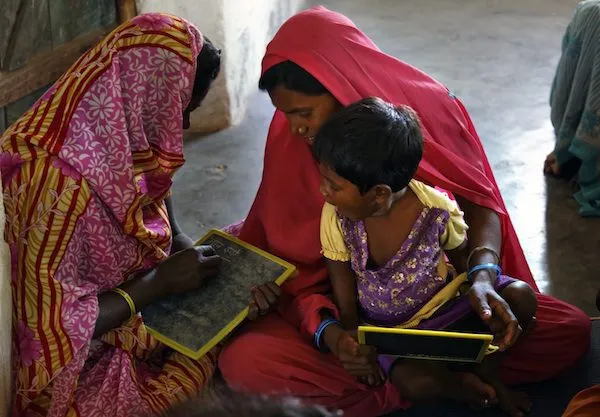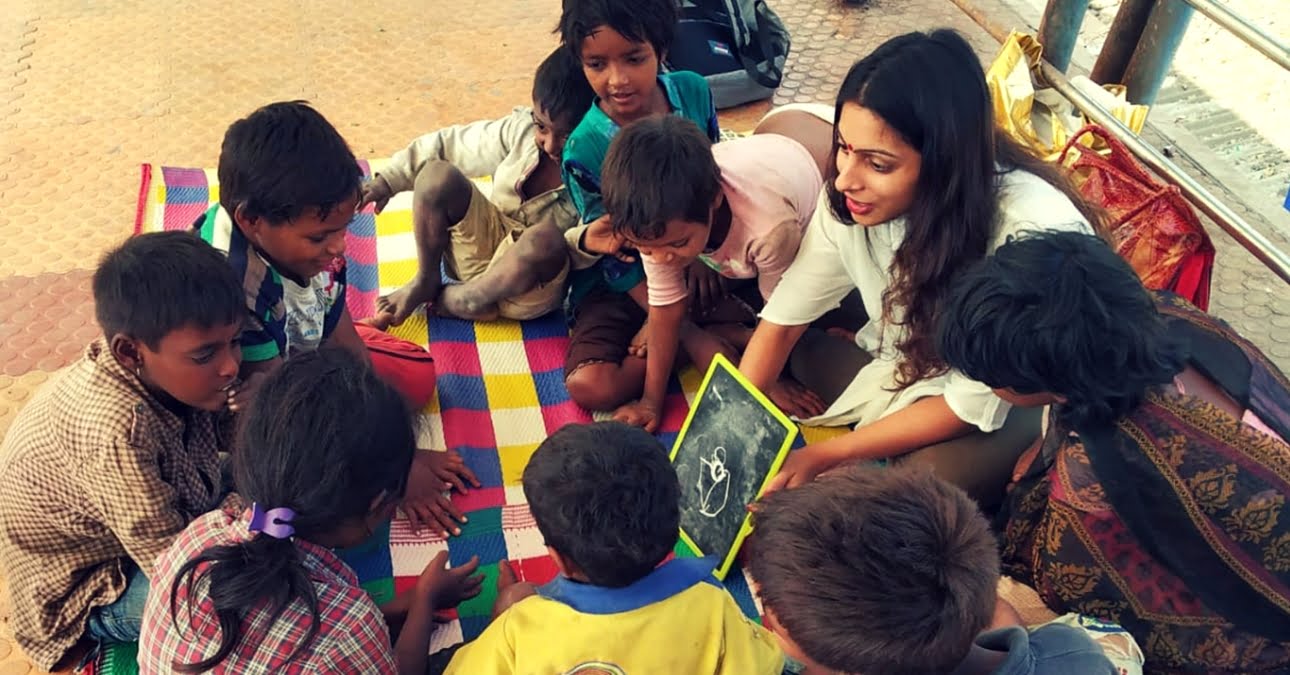As civil society actors it is important for us to build back lives of the people with a gender-sensitive approach and programme designing. It is important that we forfeit a uni-dimensional approach when it comes to envisioning outcomes and impact and adopt an intersectional approach towards finding solutions in the development sector.
A crisis like the pandemic have different degrees of impact for different people. Situations of war and conflict have skewed impact on different genders, with mostly women and other marginalised genders being the most affected. Similarly, a pandemic with seemingly no gender-bias, also has impacted women and girls in ways with consequences to face as a result, for years to come.
Let’s face it: The poor will be poorer and the vulnerable will only get more vulnerable. This means women, girls, children and the elderly will face long-term repercussions. Which is why, civil society actors need to employ an informed and sensitive lens in strategising.
Also read: The History Of The NGOization Of The Women’s Movement in India
As civil society actors it is important for us to build back lives of the people with a gender-sensitive approach and programme designing. It is important that we adopt an intersectional approach towards finding solutions in the development sector.
In Education
Several civil society actors and organisations stated how with the pandemic, their work to retain girl children in schools all turned out to be in vain. A large part of their work of over decades focused on ensuring that girls stayed in school and married at the right age and as schools shut down during the pandemic, the number of girl student dropouts are only going to increase dramatically. Not only will girls be seen as an extra pair of hands at work, with unemployment and a financial crisis looming large, parents across India would also try to get the girls married.
Another issue for girls in rural India is the lack of access to technology and mobiles, as compared to the boys. So, while all children across India have been affected because schools are shut, the children in rural India are affected most because of the lack of internet connectivity and technology access. Among them the girls are most impacted because families automatically provide the tools for the boys and not for their daughters.
Livelihood
While the pandemic led to severe unemployment, it also resulted in a not-so-surprising gendered impact in the sense that several women working as daily wage labourers, domestic helps and in the factories were now out of jobs.
The situation is far worse for other gender minorities. Access to healthcare and mental health relief has been reported as extremely difficult in pandemic conditions. Sex work which employed many underprivileged has also come to a halt because of the heightened risks around it.
Undoubtedly, the pandemic has exposed the structural and societal inequities that further exacerbate the effects of the illness. It is important, especially as civil society actors, to look at how these effects play out differently for different communities.
Health
Frontline workers such as ASHAs, mostly women, are the ones ensuring healthcare awareness, access to medicine and propagating advice to women and girls in the villages. Further, these ASHAs, Anganwadi workers and ANM workers are not provided with the necessary medical care and equipment–a proper PPE kit, for starters–even as they would ensure messages on safety, social distancing and sanitising reach every one of the villagers.
Undoubtedly, the pandemic has exposed the structural and societal inequities that further exacerbate the effects of the illness. It is important, especially as civil society actors, to look at how these effects play out differently for different communities.
It is very critical to understand the intersectionality of vulnerability – now more than ever. So, when we are looking at the impact of the pandemic on marginalised communities like say, the Dalit, disabled and/or elderly communities, among others, we will have to make sure that the most vulnerable among them, namely the trans people, women and children, especially girls, are factored as beneficiaries in the programmes and in the outcomes.
Intersectional Development
Intersectional development is critical. For instance, if we are to design programmes for persons with disabilities, we should ensure that the intervention is so designed that it not only ensures that the support reaches people with disabilities but also ensures women and girl children with disabilities are especially taken care as part of the programme. This nuanced approach will definitely ensure the holistic development of the community.

In the development sector when we as civil society actors look deeper into programmes, a clear lack of an intersectional approach is evident. Continuing with the example on programmes focused on disabled people, most programmes will largely benefit men and boys. On a quick check with several organisations across the country on programmes on disabilities, it was almost unanimous that among children in programmes there is a 60:40 ratio of boys to girls. This ratio only increases as the child grows older. It even goes all the way to 80:20.
Does this mean that civil society actors are probably over-simplifying the situation and thereby the solution too, by overlooking intersectionality?
I started speaking to more and more organisations working on disabilities to find out why this is so. There were some organisations who immediately felt there was no need to look at the gender ratio of the groups they support as long as the support is extended to needy children who have an additional burden of poverty.
While they are absolutely right and also already doing some great work that is important too, I couldn’t help but continue to ask why there aren’t enough girls benefitted by these programmes. This gap only worsens when we think of people belonging to gender minority communities. Unless there are programmes designed only for say trans men and women, they are not part of any such development programmes.
There were some organisations (usually led by women) who were keen to delve deeper into this question with me. They also cited several answers to the uncomfortable question. Why are there not enough girls and women being supported in disabilities programmes. The answers were:
- A girl with disabilities is considered to have no role to play in society. Her family gives up on her at birth or at the time of identification. Hence, they don’t see a need to send them to a centre for education or therapy.
- A lot of parents don’t feel it is important to send their girls for therapy or to school as there are not enough opportunities for girls and she will anyway just have to be home.
- The staff in organisations who engage in frontline with the communities are more men. This makes the families uncomfortable to send their girls to such programmes.
- Technical support and technicians for aids and appliances are also mostly men. Again, this makes parents uncomfortable to send their daughters to programmes.
- The Rights to Persons with Disabilities Act is silent on intersectionality and access to support.
Conscious Efforts–The Need Of The Hour
The point I’m making is that if civil society is set up to support the most marginalised, then the way we structure ourselves and design our interventions will need to be tweaked to suit the needs of the marginalised within the marginalised sections.
In the above case with disabilities, if civil society actors want to recruit more women or girls into their programmes to support them, they will have to start to make more fundamental shifts. They will have to do some or more of the following:
- Hire more women in frontline to engage with communities
- Make themselves an equitable-opportunities organisation.
- Have more gender-friendly and gender-just policies, including paternity leave.
- Think of gender outcomes in their programmes.
- Build a feminist leadership to build thinking around intersectional feminism
Also read: In Conversation With Robin Chaurasiya, Founder Of Kranti NGO
In retrospect, the pandemic has now presented to us a great opportunity. While historically perhaps we might not factored in enough thinking and planning around gender-based outcomes to programme designing, with the kind of technological know-how and other resources that we are privileged to have access to, we could think more holistically in resetting our programmes. Not just to include the communities we are set up as civil society to support, but to make sure the impact of our implementation strategies as civil society actors reach the grassroots in the process.
Maybe that will be a great start to envisioning a just and equal society?
Priya is the founder of Durga, a citizens initiative that equips women and girls deter sexual harassment in public spaces. Though a Chartered Accountant by Profession, Priya realised that she has more interest towards development issues and spent about 10 years with the British Government in India, working on Healthcare and Life Sciences as a National Lead. Priya holds deep empathy and connect with the vulnerable particularly women and girls who are survivors of gender based violence and abuse. This is the passion that makes her run Durga, in Bangalore for the last 10 years, through which she engages with youth to build gender equitable spaces. Priya is also the Lead of Gender Justice and Disabilities at the Azim Premji Philanthropic Initiatives. An avid reader of the different waves of Feminism the world has seen, student of a Masters in Gender and Women Studies, Tedx Speaker and traveller, Priya tries to learn Carnatic music (intermittently) in her spare time. Priya can be found on Facebook, Linkedin, Twitter as well as here.
Featured Image Source: TheBetterIndia




